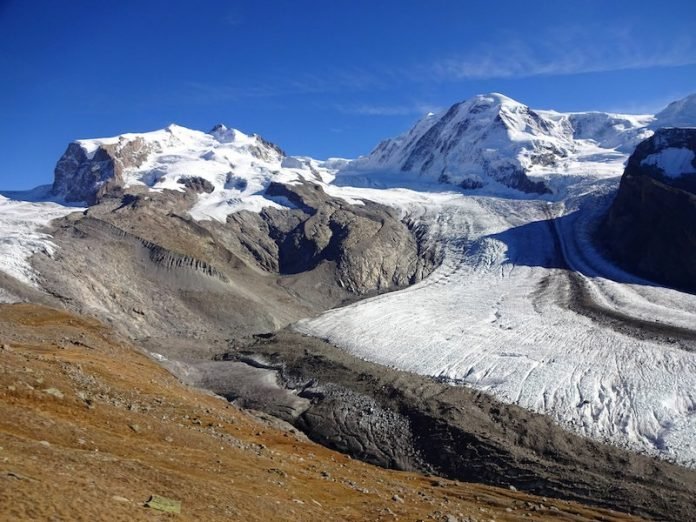
In a new study about glaciers in the European Alps, researchers found that more than 90% of the glacier may disappear by the year 2100.
The disappearance is likely to be caused by a warming climate.
The study was done by a team of researchers in Switzerland.
In the study, the team wanted to find out how Alpine glaciers would manage in a warming world.
They used new computer models that combined ice flow and melt processes and observational data.
The researchers found that large changes would occur by 2050.
About 50% of glacier volume will disappear, and this is largely independent of how much we cut our greenhouse gas emissions.
However, after 2050, the future of glaciers will strongly depend on how the climate will evolve.
Under a limited warming scenario, glaciers would lose about two-thirds of their ice volume by 2100.
Under strong warming, the Alps would be mostly ice-free by 2100. The global greenhouse gas emissions are currently just above what is projected by this scenario.
The team suggests that glacier retreat would have a large impact on the Alps. This is because glaciers are an important part of the region’s ecosystem, landscape, and economy.
For example, glaciers can attract tourists to the mountain ranges and act as natural freshwater reservoirs.
They also provide a source of water for fauna and flora, as well as for agriculture and hydroelectricity.
The researchers suggest that their findings provide the most up-to-date and detailed estimates of the future of all glaciers in the Alps, around 4000.
The glaciers in the European Alps and their recent evolution can be the clearest indicators of the ongoing changes in climate.
The study leader is Harry Zekollari, a researcher at ETH Zurich and the Swiss Federal Institute for Forest, Snow and Landscape Research.
The study is published in the European Geosciences Union (EGU) journal The Cryosphere. It was also presented t the EGU General Assembly 2019 in Vienna, Austria.
Copyright © 2019 Knowridge Science Report. All rights reserved.



